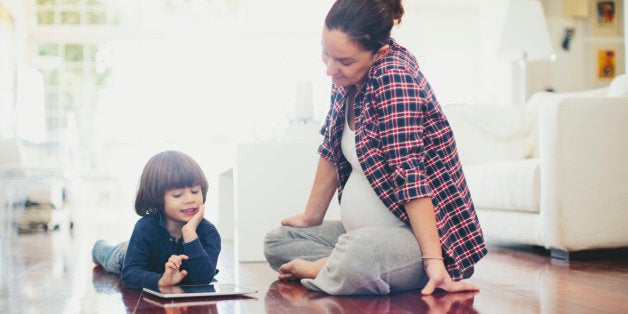
The mind of a child abstains from the clutter and details of life, work and other responsibilities that adults normally experience. For these reasons, typically, kids have an easier time being in the present moment, while adults find themselves wanting to relearn the awareness they once had. Hence, with the constant practice of the following 10 exercises, both parent and child will be able to experience a greater sense of present awareness, grounding and contentment:
1.Visit a Park and Just Be: Allow your child to run, walk, talk, be silent or whatever your child desires to do - while you, the parent, acts as the observer. Perhaps, suggest to your child to observe the trees, flowers and the birds as they fly by - then ask her: what is she observing, smelling, and feeling? Without judgment or expectation, allow your child to be in the present moment. Allow yourself to be with your child and be curious. Ask yourself: what can I learn about my child today? Does my child view the world differently than me?
2.Body Scan: The point of this exercise is to help your child become more aware of his body. You can do this practice at any time during the day. Therefore, sit quietly or lay down next to your child; you both can lay on the bed, the park, or the backyard. Ask your child to follow your slow, deep breathing pattern. Remember to guide your child with a soft voice, then ask: How does your body feel? How do your legs feel? How does your neck feel? Take your time, embrace each moment and listen. While practicing this stillness, you and your child will experience a greater level of body awareness resulting in a nice, calm feeling.
3.Before sending your child off to school, kindly, ask your child how she is feeling at that moment. Then listen. This practice causes your child to immediately be and experience the present moment. This exercise enhances your child's awareness of her experiences in the world. She is also learning to trust in you. Finally, thank your child for sharing herself with you!
4.Body Dance:. With this exercise you will help your child release any tension she might be holding in her body. You can do this exercise while laying down or standing up. Start by asking your child to mimic your moves while you gently shake your arms, then your legs, then your head - then your entire body. Allow room for talking, screaming or singing - let you and your child freely, and fully express your selves! You can do this fun exercise for as long as you feel needed.
5.Body Dance 2: This is a modified version of the previous practice. Instead of a continuous movement, allow you and your child to shake, or move your bodies, for 10 seconds and then stop. Rest for 10 seconds, and repeat the exercise as needed. This practice will bring a deep sense of calmness and alertness of the present moment.
6.Journal Time: Gently encourage your child to journal about their day, present moment, or anything they desire - for five minutes - at any point during the day. Make sure you give your child room for this to be a private exercise. Make this a daily practice! This will allow your child to be more aware of his emotions, experiences and actions.
7.Paint/Draw: Allow your child to freely paint or draw - this exercise encourages the expression of his being. Without expectation encourage your child to share with you, anything they want, about their colorful creation. Give your child room for this to be a non-judgmental practice and have fun!
8.Bath Time: This exercise works better at the end of the day. Prepare a nice, warm bath for your child. While taking the bath, allow your child to relax, express, or share with you whatever comes to mind. You might want to encourage a conversation about his day. This practice could be enhanced with some aromatherapy, or music in the background. You can also add a couple of minutes of deep breathing - before and after the bath.
9.Bed Time Meditation: As your child gets ready for bed, take a few minutes to gently ask and guide your child to mimic your slow, deep breathing pattern. This exercise will allow your child to reach a good level of calmness before falling asleep. The more calmed and centered you both feel, the better the sleep!
10.Eating Meditation: While eating, ask your child to mimic your actions: slowly, take a piece of food and smell it, observe it, feel it and gently place it inside your mouth. Allow yourself to chew slowly. Patiently taste the food - and fully experience its flavor. Imagine the food nourishing your body. How will it nourish your body? How will it nourish your child's body? As you finish chewing - allow yourself and your child to be grateful for sharing this experience. Repeat if necessary.
To conclude, experiencing a greater awareness of the present moment is a necessity, which leads to a more fulfilled life. And there is no better way to share this wonderful experience than with those closest to your heart.
If you choose to, please leave comments - I would love to hear about you and your child's mindfulness experiences!